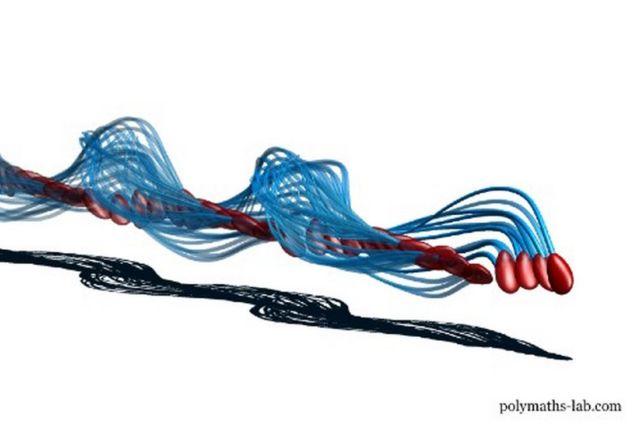Research challenges centuries-old assumption. Scientists now find out how human sperm really swim.
A breakthrough in fertility science by researchers from Bristol and Mexico has shattered the universally accepted view of how sperm ‘swim’.
Human sperm uses asymmetric and anisotropic flagellar controls to regulate swimming symmetry and cell steering.
Above: The sperm tail moves very rapidly in 3D, not from side-to-side in 2D as it was believed. Credit polymaths-lab.com
In the 17th century, Antonie van Leeuwenhoek used one of the earliest microscopes to see how sperm swim. He described the sperm as a “living animalcule” with a “tail, which, when swimming, lashes with a snakelike movement, like eels in water”.
Strikingly, this perception of how sperm moves has not changed since. Indeed, anyone today with a modern microscope would make the same observation: sperm swim forward by wiggling their tail symmetrically side-to-side.
Our new research using 3D microscopy shows that we have all been victims of a sperm deception, an illusion. Only now we can see that for 350 years we have been wrong about how sperm actually swims. Sperm ingeniously solved a mathematical puzzle at a microscopic scale: they create symmetry out of asymmetry. H. Gadêlha, P. Hernández-Herrera, F. Montoya, A. Darszon, G. Corkidi, Human sperm uses asymmetric and anisotropic flagellar controls to regulate swimming symmetry and cell steering. Sci. Adv. 6, eaba5168 (2020).
Sperm tail moves like a precessing spinning top that cancels out the one-sided swimming stroke in an ingenious corkscrew motion: Symmetry is achieved through asymmetry, enabling human sperm to swim forwards. Credit polymaths-lab.com
source University of Bristol







Leave A Comment